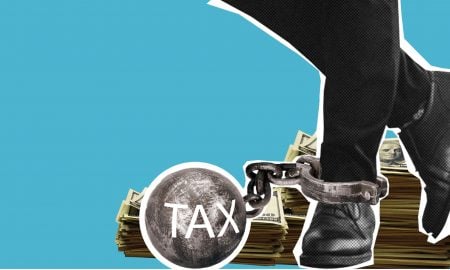
We Tell You How to Avoid Medical Debt or Get Rid of It Completely – Part 1

The medical debt trap is to be avoided by patients and consumer advocates mention things people should avoid. Financial assistance is available, but requires self-advocacy. While managing treatment and medical costs in the complex American medical billing and health insurance systems, many patients have difficulties and feel humiliated about how to proceed. Though sick and unable to pay, 100 million people in the USA, live with medical debt burdens.
Get cost estimates

Source: Pexels
If uninsured, ask for cost estimates in advance. The federal No Surprises Act, effective from January, 2022 requires providers giving uninsured patients “good faith” estimates of planned care costs. Every hospital offers charity care or some financial assistance, with varying eligibility requirements but waive or discount bills for patients with incomes three times the federal poverty level which for a household of four in 2022, is $83,250. People who are employed often qualify for discounts or free care, and non-profit groups help patients secure charity care. Some groups develop a database of hospital charity care policies and online tools allowing patients to check eligibility and it’s worth trying. Documents such as pay stubs or income tax returns will help but is no easy process, requiring documentation to be faxed. Persistence pays If qualified under Supplemental Nutrition Assistance Program, or SNAP, that streamlines applications for a hospital’s financial aid. If not a U.S. citizen or legal resident, some states like New Mexico and Maryland, bars hospitals from checking immigration status. Ambulance services do offer charity care programs, so ask if you qualify. Your medical providers maybe aware of other charitable programs covering costs for rides to medical appointments.
Incurring Medical Debt

Source: Pexels
If worried about incurring debt during a health crisis or struggling to pay bills, you’re not alone as 100 million people (41% of U.S. adults) have health care debt. But be informed and protect yourself. Experts say that patients experiencing medical issues shouldn’t navigate this complicated system, but informed consumers could avoid debt traps, by knowing the insurance coverage, a hospital’s financial assistance program, and the state’s consumer laws. Be persistent and ask lots of questions. Never take ‘no’ for an answer, as you might get a ‘yes’. Even people with health insurance could land in debt as many are underinsured, and incur huge out-of-pocket costs from co-insurance and high deductibles. Get the best insurance coverage you can afford even if very healthy. Understand what are the co-pays, co-insurance, and deductibles. Call the insurer to assess all potential out-of-pocket costs, as you cannot make policy changes except during open enrolment typically in the fall or early winter, or after a major life event.
Sign up for public insurance if you qualify

Source: Pexels
If uninsured and requiring healthcare, you could qualify for public insurance – Medicaid or Medicare. Ask the provider /hospital to help you check eligibility before committing to a care plan and then stay with providers participating in such programs. Check whether your care specifics are covered. After doctors prepare your treatment plan, verify if all providers to be seen are in-network and whether the treatment must be pre-authorized. Question your insurance provider, doctor’s office, or hospital, especially for planned procedures. If the drug isn’t covered by insurance, the drug-maker may have a patient assistance program with varying eligibility requirements.
More in Investments & Savings
-
`
Famous Entrepreneurs Want You to Learn From Their Biggest Failures
No one can be an overnight success, as failure is an inevitable baggage on an entrepreneurial journey. Some famous entrepreneurs speak...
December 6, 2023 -
`
Miss your Pet When Traveling? Book These Hotels if You Want a Furry or Feathered Friend Welcoming You at the Lobby
Do you miss your pet, having left him/her behind when traveling? At some hotels, you get your “I-really-miss-my-pet” fix, all thanks...
December 6, 2023 -
`
Downsizing after Retirement is a Pain, but Here’s How You Can Go About It
Retirement needs extensive planning, and it is not just finances. Without proper plans for this next phase of life, chances are...
December 6, 2023 -
`
These are Some of the Greatest Inheritances Recorded the World-over
The Bloomberg Billionaires Index has listed the 25 richest families around the globe, and control over 1 trillion dollars of the...
December 5, 2023 -
`
Stunning Hotels Around the World Which Even Celebrities Fawn Over
Where do Celebs vacation? In certain aspects, superstars are similar to us, but not when it comes to vacation lodging. Stars...
December 1, 2023 -
`
Unlocking Financial Success: Timeless Wisdom from John Paul DeJoria
In a recent interview with Forbes, John Paul DeJoria, the visionary entrepreneur behind Paul Mitchell and Patrón Tequila, shared a wealth...
November 8, 2023 -
`
The Ultra Wealthy Want Their Privacy and They’ll Do Anything to Get It
Ultra-rich rapper Nicki Minaj in her pink Lamborghini worth $400,000 or celebrity entrepreneur Mark Cuban stepping out from his private jet worth $40...
October 31, 2023 -
`
How Celebrities Managed to Solve Their Financial Woes
Celebrities have lost billions and filed for bankruptcy while drowning in debt. If they can resolve their financial issues, then so...
September 8, 2023 -
`
Useful Real Estate Strategies at Various Stages of an Investing Career
There is no one perfect investing approach, as real estate investors are aware. At various phases of your investing career, investigate...
September 2, 2023















You must be logged in to post a comment Login